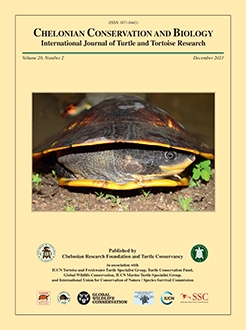Vegetation has been shown to influence nest environment (temperature, humidity), affecting hatchling's development as well as emergence success, and has also been used as a cue during the selection of a nesting site. For green turtles, Chelonia mydas, nest density is typically higher in the vegetated zones. This study evaluated the influence of vegetation presence and percent cover on the nesting success and embryonic development of green turtles in Guanahacabibes Peninsula, Cuba. The vegetation cover had a positive and significant relationship with the number of nests (r = 0.56, p = 0.01, n = 17). Two vegetation patches are identified with different vegetation cover values: 29% for the first (closer to the high tide line) and 37% for the second. We found the highest nesting success (70%) and nest relative frequency (15% of total nesting) around the first patch of vegetation. Median hatchling emergence success was 88% (40%–96%, n = 54) in the first patch and 93% (78%–100%, n = 40) in the second. The incubation period was lower in the first patch (mean = 51 d, range = 48–60 d, n = 44) and higher in the second (mean = 54 d, range = 45–67 d, n = 39). This is the first study that reveals the positive impact of sandy coast vegetation on Guanahacabibes' green turtle nesting and will be useful in conservation actions such as native vegetation restoration plans and temperature control using shade management with vegetation.
How to translate text using browser tools
3 November 2021
Influence of Sandy Coast Vegetation on the Reproductive Success of Green Turtles at Cuban Nesting Beaches
Claudia Cabrera Guerra,
Julia Azanza Ricardo,
Ryan Betancourt Ávila,
Fernando Bretos,
Pedro Pérez Álvarez
ACCESS THE FULL ARTICLE
beach characteristics
Chelonia mydas
Cuba
reproductive success





